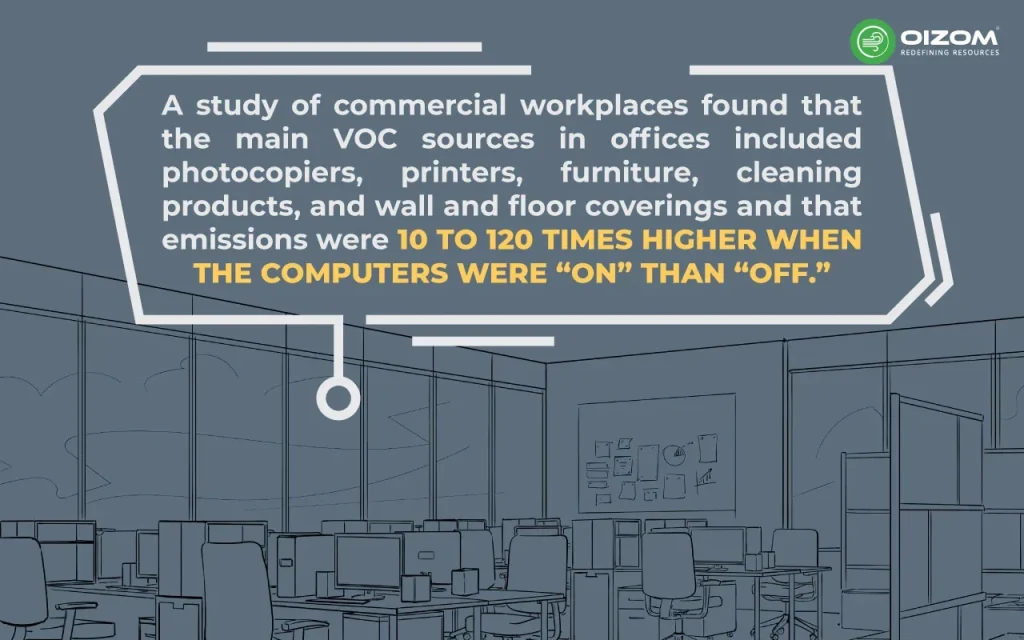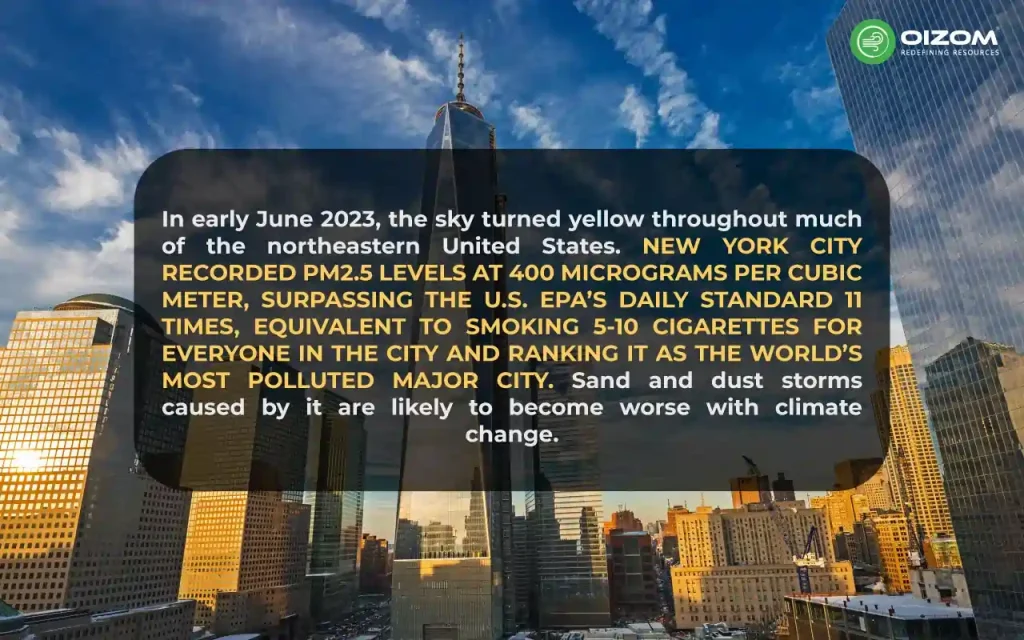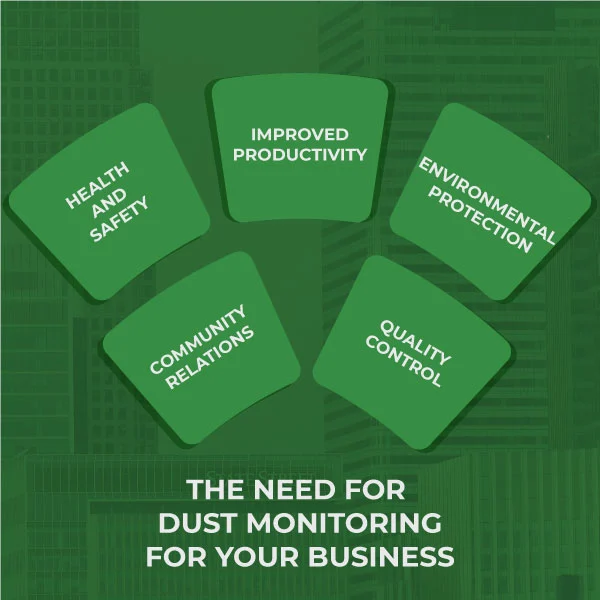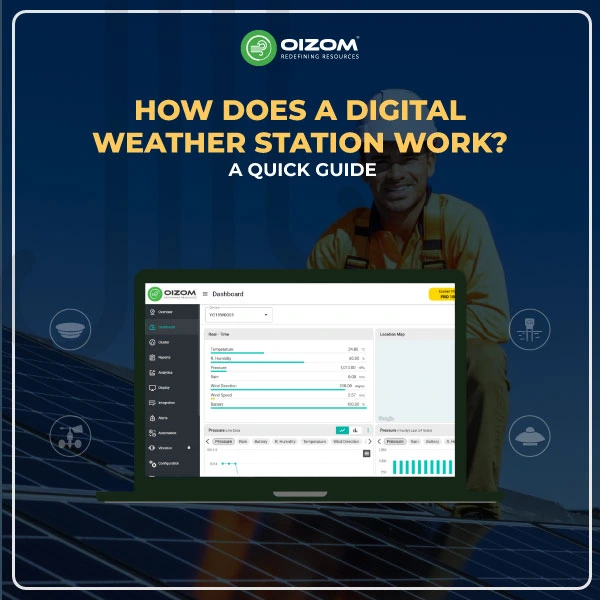Dust is everywhere in business, from the constant need of construction sites to the vibrating machines of manufacturing plants and even in the seemingly peaceful office surroundings where paper and machines coexist. These particles, ranging in size from microscopic to visible to the naked eye, are formed by various processes. Stacking components, carving wood, and molding plastic all contribute to the particulate air that defines our professional environments.
Particulate dust monitoring, measurement, and control systems remain a major occupational health and safety concern in many businesses. Managing dust in an office environment is critical for various reasons, including preserving employees’ health and safety, complying with environmental standards, and maintaining productivity and efficiency. Dust and other particulate matter have been shown to have a deleterious effect on the body’s respiratory system, potentially exacerbating asthma and other preexisting disorders. This is why having correct dust monitoring equipment is critical to ensuring your monitoring program properly aligns with the project’s environmental and health outcomes.
From here, you may assess project impacts and the efficacy of dust reduction activities. This blog will guide us through why dust monitoring is essential and the various methods. We will give complete information about the importance of dust monitoring in business.
The Need for Dust Monitoring for Your Business

Dust monitoring is critical for businesses in various industries to guarantee workplace safety, compliance with health standards, and environmental sustainability. It entails taking systematic measurements of airborne particulate matter to assess the quality of indoor and outdoor air linked with industrial operations. Implementing a dust monitoring system can aid in detecting the presence and quantity of dangerous dust particles, which, if inhaled over time, can cause health concerns in personnel. Here are some reasons why the need of dust monitoring for your business is essential:
- Health and Safety: Inhaling airborne dust can cause respiratory problems, allergies, and serious health ailments like lung disease and cancer. Managing dust exposure protects workers’ health and well-being, lowering the risk of occupational diseases.
- Improved Productivity: Excessive dust can reduce sight, hinder machine functioning, and create hazardous working conditions. Proper dust control improves visibility and functionality, resulting in higher production and less downtime.
- Environmental Protection: Dust from job sites can escape into the surrounding environment, producing pollution and potentially harming ecosystems. Effective dust control reduces environmental damage and indicates a commitment to sustainability.
- Community Relations: Controlling dust emissions can benefit adjacent populations. Minimizing dust distribution beyond project site boundaries demonstrates respect for the surrounding neighborhoods and contributes to good public relations.
- Quality Control: In some industries, dust can contaminate products, causing quality difficulties. Dust management prevents product contamination and produces higher-quality results.
Dust Monitoring Equipment for Your Business
Choosing the best dust monitoring equipment is critical for workplace health, safety, and environmental monitoring programs. While you can use a variety of dust sensors, air quality meters, and samplers, we’ll go over real-time air quality monitors below:
How Oizom Can Help?
Using advanced sensors and data analytics, Oizom dust monitoring system can accurately measure dust particle concentrations in the air. This real-time monitoring allows for timely and effective responses to dust pollution. For instance, in areas where construction or industrial activities are causing elevated dust levels, Oizom’s data can prompt immediate mitigation measures such as water spraying or adjusting work schedules to reduce dust emissions.
Additionally, Oizom’s comprehensive data analysis helps identify dust pollution trends and sources, enabling long-term planning and policy-making to control dust more effectively. This is especially vital in urban areas where dust contributes significantly to air quality issues, affecting public health and the environment.
By providing actionable insights, Oizom empowers communities and authorities to make informed decisions, leading to a cleaner and healthier environment.
Effects of Dust on Health and the Environment
Dust can have massive long-term effects on our health and environment and could even cause death in some instances.
Effects of Dust on Health
- Several construction activities can create dust. However, because dust particles are so tiny and not always visible, dust may not always seem to be an obvious health hazard. Every week, construction workers die from lung illness induced by dust exposure, and many more suffer from severe long-term lung disorders. However, dust emissions from construction activities affect personnel on the job site and irritate the site’s borders. Dust can irritate surrounding homeowners by soiling windows, cars, and laundered garments left to dry.
- Long-term exposure to dust can cause major health problems such as lung cancer, COPD, silicosis, and asthma. Unfortunately, many disorders may not become apparent when treatment is no longer effective. As a result, an effective dust control system on site is essential.
- Short-term exposure to dust can cause coughing, sneezing, wheezing, Irritation of the Eyes, Nose, and Throat, and Increased susceptibility to respiratory infections.
Effects of Dust on Environment
- Sand and dust storms have become a serious global concern in recent decades because of their significant impacts on the environment, health, agriculture, livelihoods, and socio-economic sectors such as energy and aviation.
- Dust influences the planet’s radiative balance in two ways: directly by scattering and absorbing incoming solar radiation or indirectly by changing the optical properties of clouds, an important player in the climate system.
- Dust also contains iron, a limiting nutrient in many areas of the ocean, so when dust falls onto the ocean, it can act as a fertilizer for the growth of algae or phytoplankton, which uses CO2. Dust affects climate and is influenced by it: its production, atmospheric transport, and deposition are sensitive to climatic conditions.

Methods of dust monitoring
Previously, dust was frequently measured at the site border using a low-cost binding pad gauge. However, this method is now considered low-tech and unreliable, as the data presented is retrospective. In contrast, today’s advanced dust monitoring solutions provide data in real-time, allowing necessary action to be taken.
More modern, innovative dust monitoring methods use advanced scattered light measurement technology. These instruments project light and detect light scattered back from the dust to detect very low dust levels. They can measure the dust particulate size and the quantity of dust in real time, provide instant dust level readings, and allow faster responses to reduce exposure. Targeted sampling for hazardous dust such as silica or asbestos examines workplace risks using air and surface samples that are tested in laboratories. Emerging technology, such as sensor-equipped drones, extend coverage to wide and remote locations while collecting detailed data on dust distribution. These methods, ranging from classic to modern, improve the precision and effectiveness of dust monitoring systems.
Conclusion
In conclusion, dust monitoring is important for firms looking to maintain air quality, ensure health and safety compliance, demonstrate that ‘prevention is better than cure.’ and build a sustainable operational environment. Utilizing a Dust Monitoring System Working efficiently can help companies achieve these goals effectively by providing accurate data and real-time insights. Implementing effective dust monitoring systems not only aids in identifying and mitigating potential health hazards related to airborne particulates but also boosts workplace productivity by ensuring a clean and safe working environment. Employers can develop settings that comply with safety regulations and enhance worker health and well-being by properly measuring dust concentrations. Undеrstanding thеsе risks, acknowlеdging thе symptoms, and engaging in proactive measures arе pivotal to еnsuring a safеr, healthier future for еvеryоnе.
FAQs
To control dust risks, implement regular cleaning schedules, use dust suppression systems like water sprays or air filters, ensure proper ventilation, and adopt workplace practices that minimize dust generation. Also, employees should be provided with personal protective equipment (PPE) in high-exposure areas.
Dust monitoring aims to assess the concentration and composition of airborne particles to ensure air quality meets health and safety standards. It helps identify potential health risks, ensure regulatory compliance, and implement measures to protect the environment and public health.
Dust levels are commonly measured using particulate matter (PM) samplers and real-time monitoring devices like laser-based instruments or optical particle counters. These instruments can provide accurate data on the size and concentration of dust particles in the air.






